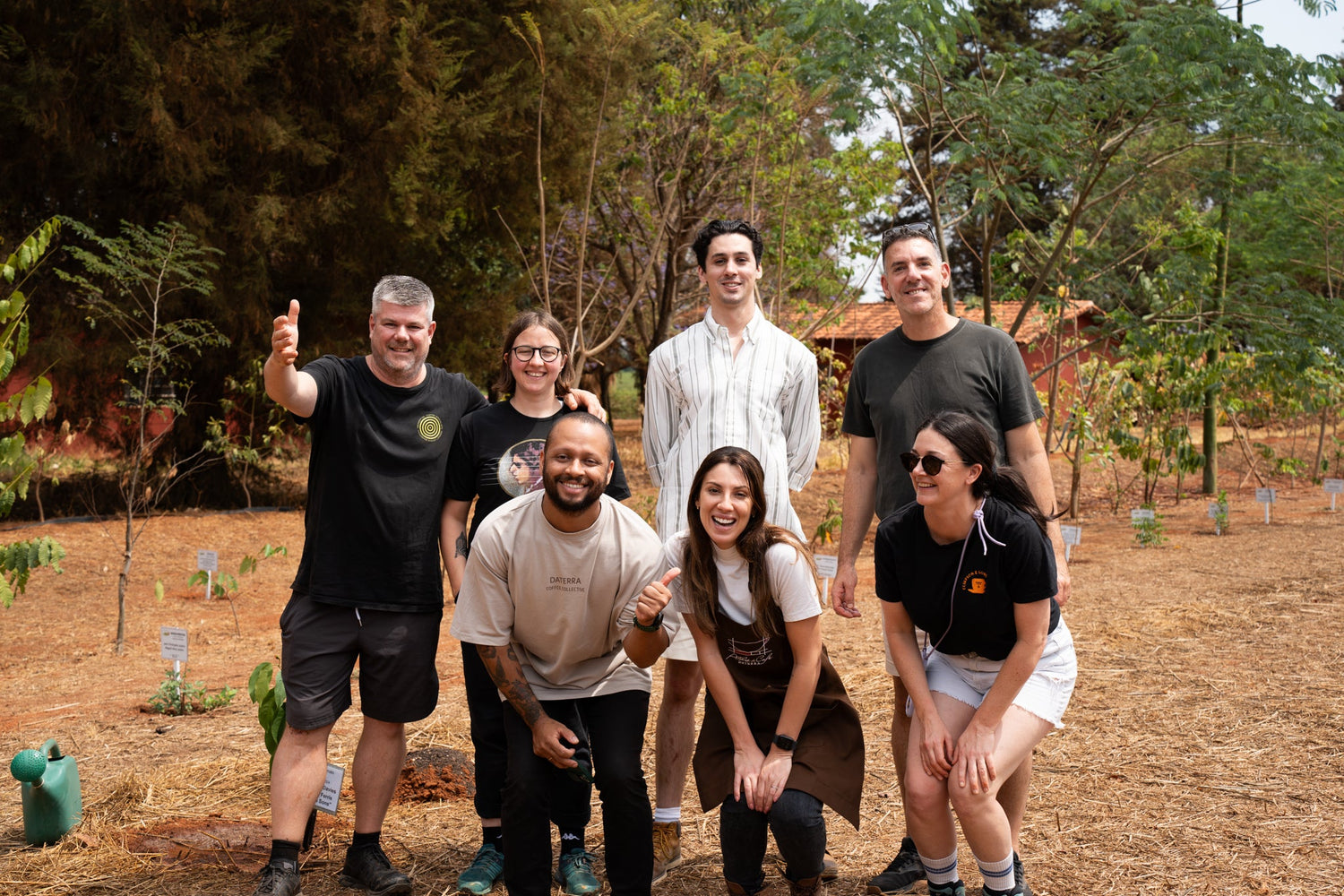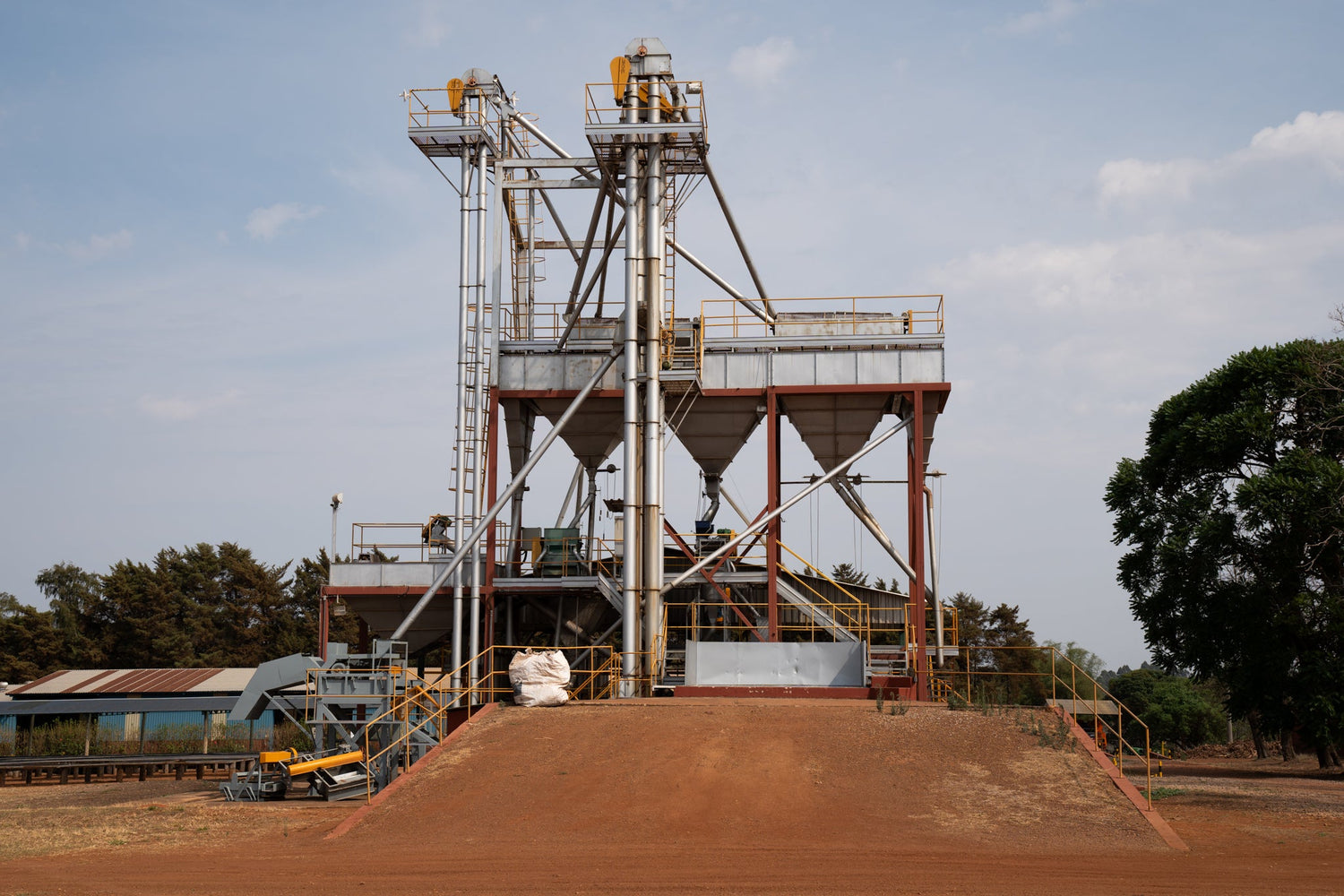Considering the pillars of sustainability Part 2.
Moving away from pesticides to organic health in the soil
To give you some context - I scraped through science at school. Probably because I learn by doing (or seeing). I am only just finding out about the impact of fertilizers and NPK and homemade compost. Farming principles are something I have never come across and my parents weren't gardeners, yet I have a love and passion for nature and coffee, so bear with me here...
When the farm used pesticides, beneficial yeasts and other soil life were killed along with the intended victim of whatever was harming certain coffee plants. This is still the norm in so many coffee farms. Bora and Roya are examples here.
Now, Finca San Jeronimo have controversially abandoned the use of pesticides, are moving away from the ‘monoculture norm’, to doing everything they can to create an ecosystem that is diverse with plants, yeasts and nutrients (outside of the NPK norm) to produce top quality specialty coffees. There is a fundamental belief that with lots of nature surrounding the thing we most want to crop, relationships are happening that allow nature to correct a lot of its own problems. Essentially Giorgio believes in the Hidden Half of Nature, and that is ‘soil health’. Lets have a look at some specific examples:
Bora Management & Leaf Rust: Nature’s checks and balances.
Managing both bora beetles and leaf rust fungus is important - as both cause devastating effects on coffee production. Firstly Bora management: a few years ago the Guatemalan coffee Association told Giorgio to keep a look out for coffee cherries with a small white growth on them. A few years later he found one of these white yeasts and began a process of propagating it in used coca cola bottles. Now, is one man’s full time job to propagate the yeast in a shed full of white-yeasty coca cola bottles.
The fungus creates a zombi-like episode when a bora eats it. The fungus takes over their brain and stuns and controls the bora, and in doing so sends a message to go back to its home where it can infect the other bora beetles. It is one of nature’s controls that stop the bora populations growing out of proportion. In the past, treating any sign of leaf rust mould with fungicide would have also killed this bora-beetle-killing-yeast.
Realising this, San Jeronimo have taken a brave leap of being fungicide-free, and as a total 180 on that practice of whitewashing all fungus in the shed of coca cola bottles, and they also now propagate fungus, bacteria and other microbial life in a big ‘compost tea kettle which is then methodically sprayed all over the farm, where leaf rust is most likely to occur.
Essentially the ‘tea’ is made overnight, by suspending just 5 litres of house compost in a big tea bag, inside a 2400L ‘tea pot’ of warm fresh water overnight. The water is heavily oxygenated by a rapid pump which ensures all the single cell organisms (natural yeast, bacteria, archaea and others) in the compost have the oxygen they need to multiply in numbers. The count starts at approximately 60,000 cells per litre at night time, and by morning, to millions of cells per litre! Spraying this all over plants, both sides of the leaf, has rapidly reduced leaf rust as there will already be ‘healthy’ populations that stop the unhealthy leaf rust dominating.
In a country that has had its coffee production reduced due to changing weather, problems with leaf rust and their costs of production being more than what they sell per kilo. In 2018 the whole region only harvested about half to 60-70% of what was expected. The summer was too dry and the flowering did not set. They face huge challenges and the highlights reel below talk about some of the things being put into practice.
Soil Erosion
Realising how much soil erosion there was, they decided to ‘cover crop’ between coffee rows with nitrogen-fixing plants. Promoting natural ground cover (including 4 native ground cover crops. This increases the ground temperature to up to 36 degrees centigrade and creates a floor ecosystem rich in insect life.

Their soil is volcanic and doesn't carry much nutrients so they need organic matter. Organic matter has a bigger surface area than clay, but can erode easily. It takes almost 300 years to make one inch of top soil but it can wash away in 30 mins of rain if a farm doesnt have good practices.
Preventing soil erosion and casting shade on the coffee is important. All plots have a different shade set up - different trends determine what is grown for shade. They have hardwoods that take 30 years to grow (economically this is a great long term plan, as when they harvest this wood is more valuable than a whole year's coffee harvest. They also have 5000 yellow flowering trees; bamboo everywhere where water runs, for ground control and also used for construction purposes.
Ecosystem
Tracking whether their initiatives in fighting leaf rust and bora beetles work, they have had to be empirical in keeping numbers and tracking incidents. This scientific ‘record keeping approach’ underpins much of what they do.
Essentially a series of positive, knock-on effects for the ecosystem can be summarised like this:
- No pesticides & fungicides allows natural yeasts, fungus and insects to live on plants and in the soil.
- More organic matter in the soil allows more worms, other invertebrates to live in the soil.
- More invertebrates and insects ensures there’s plenty for birds to eat on the farm.
- More small birds ensures there’s plenty of food for bigger predatory birds
- More animal life ensures the circle of life continues as animals eat insects or other animals, and it cycles back to decomposers.
Giorgio tracks bird numbers and species and an amazing array of bird life has been steadily growing (check out Giorgios instagram @pajareando.gt). The last 5 years went from seeing 4 species of hummingbirds to 16 species. This is from leaving the cover crop between the rows of coffee trees and making these changes across the farm.

Organic without certification
It is worth noting that the farm is organic without certification, meaning they farm organically (without chemicals) but do not pay inspectors to come and tell them that they do, and nor do they then pay the inspector extra money to put the green leaf icon on their coffees. Giorgios opinion of organic certifications is that they marginalise the ways farmers are doing things and their farm practices. This is very much how the natural wine movement is working in the UK at present with many wines being organic and or biodynamic without certification.
Nursery
Finca San Jeronimo has a large nursery with between 30-60,000 trees or about to be trees, which grow for one year in the nursery. In order to give a coffee tree the best chance of survival, they graft robusta or iberica as the base root stock with the specialty variety. Anne-Marie (in the pictures) grafts about 1000 per day. They have done this because robusta is resistant to nematodes (little worms that can harm roots) and iberica is resistant to both nematodes and root mite. They have planted one half robusta, one half iberica with catuai to see what the difference is - in growing conditions and in cup profile.
Coffee picking and processing.
Picking and processing coffee requires standards and protocols in place to ensure the hard work that has gone into growing it, is then passed on down the chain to make sure quality remains high. Protocol for picking, processing and storage all ensure this, nothing is taken lightly or given to chance. A standard process aims for 17-20% brix and using samples of this they can see how fast or slow they are at picking as to how ripe, dry, over-ripe the coffee is. Picking is a skill - pickers pick all day and concentrate on quality. If they accidentally break a stump (the bit the coffee cherry grows out of) it means the coffee will not grow in its place next year. If you are growing Geisha, an already low yielding crop, this can have an impact.
Coffee is collected at micro receiving stations all across the farms, meaning pickers can pick all day, rather than spend their time going back and forth. One truck load down to the mill is about 6-10 bags of coffee. At the mill the cherries are separated into lots, dates, times. Then they are separated first by density, then by screen size.
Coffee is processed in both washed and dried methods.
All parchment is stored in grain pro because it provides a barrier for humidity and oxygen. Experiencing Guatemalan humidity goes from 70-90% in one day. Storage is the key in these conditions.
What happens to coffees that are not up to specialty standards? Well they go into a local grade or seconds coffee. This coffee still needs to be used and to go somewhere.

Financial sustainability
Finca San Jeronimo diversifies their risk. With the fundamentally bleak equation of commodity coffee price being less than the cost to make it, they have invested in alternatives to coffee. Their dairy farm supports a lot of what they do, as has investing in other crops like vanilla, cacao, hardwoods, honey, and the list goes on.
To lower cost of production The Bressani family have removed the dependence on buying industrial made fertiliser, by making their own.
One initiative that is proving worthwhile is with their workers that also have small plots of coffee. Finca San Jeronimo buy their cherry at 30% over the local price. They cannot always afford pay rises or bonuses so it is an incentive to produce quality coffee with care and in return it gives their employees their own economy.
Summary
Everything about Finca San Jeronimo Miramar’s coffee production is considered, tested, put into question, trialled to give the best results. I have mainly talked about the growing and farm conditions, but the flow on affect to their coffees, their processing and export is in the same vein.
What I came away from all of this, is through all the challenges they face they take on by the horns by experimenting and asking questions of the traditional ways of doing things.
That is why San Jeronimo is one of the Best in Show for producer sustainability in action.
You can try this coffee now - click here. Watch this space for part two.



